Remember the 1980’s? Digital natives are horrified when they hear stories about new phone lines taking months to deliver, before the Telecoms industry was deregulated.
Similarly, the new Payment Services Directive will usher in a new era of exciting alternatives, creating better value for consumers.
Why is it important to understand PSD2 and how will affect your business? Let’s get started with five key facts:
- PSD2 is the 2nd EU Payment Services Directive.
- It became law on 13 Jan 2018.
- This will enable bank customers to use 3rd party providers to manage finances.
- Allows the building of new financial services with banks’ data and infrastructure.
- Requires strong customer authentication (SCA) by 2021.
Aims & Objectives of PSD2
The aim of PSD2 is to develop an Open Banking environment in Europe, whereby banks open their infrastructure to allow third party providers access to their data.
PSD2 set out to enhance security and protect customers, ensuring technology and business-model neutrality and integrating frictionless payments in the EU.
However, financial institutions are slow to take FinTechs on board. This is understandable due to legacy software dependencies, and rooted work processes.
Disruption to the banking ecosystem will pose many possibilities for banking institutions, FinTechs, consumers and other non-financial institutions, e.g. the new Apple Card.
New Players
New players will be introduced to the market, and in order to facilitate Strong Customer Authentication (SCA) financial institutions must develop application programming interfaces (APIs), which allow third party providers access to bank accounts.
This will provide customers with more benefits and easier access to their accounts. Although banks and third parties have the capabilities to develop these APIs, there are no standards stating how these APIs should look.
Developing APIs was a key factor for the European Banking Authority in PSD2 to ensure Open Banking could develop and bring new competitors to the fore. Opening up banking institutions when consumers don’t tend to shop around may be a new idea, but there are key reasons to have this system in place for the future:
- Harmonisation: When compliance costs are reduced and banks can operate their services together in many countries, it will make it easier for them to scale and move across territories.
- Consumer Transparency: As new entrants and ideas come to the fore, consumers will be more aware of other options across Europe as the whole process becomes digitised.
- Competition: With Open Banking new entrants will be encouraged to join the market.
- Global Online Shopping: E-Commerce has been a driver of change, and consumers expect similar options with their online banking.
Consumer Behaviours V Financial Business
These factors will have a big influence on both consumer behaviour, and how banks continue to adopt the PSD2 regulations, but right now there are boundaries to these advancements which are slowing down the uptake of this new model.
The lack of API standardisation is delaying innovation, as banks don’t want to come up with their own rules and regulations. Understandably, they are hesitant to decide on a concrete API concept.
There are still many risks and costs involved for banks, leading to considerable ambiguity about the new rules of PSD2.
Strong Customer Authentication – SCA
The new deadline for SCA is 2021 – this means that online customers must include two of the following elements in order to complete their transaction.
- Something the customer knows, e.g., PIN or password
- Something the customer has, e.g., Phone or hardware token
- Something the customer is, e.g., Fingerprint or facial recognition
These factors must be complied with in order for banks to authorise the transaction. To ensure these elements are met in all APIs and transaction technologies, a new authentication protocol is being rolled out that will meet the SCA standards. 3D-Secure 2 will make for a frictionless checkout, with Google Pay and Apple Pay already implementing biometrics and passwords into their checkout processes.
Despite PSD2 setting out to open up the world of banking, Stripe carried out a survey on the impact of these new rules. They estimate the impact of this economic hit to be €57 billion, and big players like Amazon and Apple are forewarning the market about the impact of these rules.
37% of European consumers say they would change their bank if it did not offer them up-to-date technology. With new technologies providing speedy biometric authentication, and customers wanting their banks to adhere to the latest technologies, there is a fine line between providing for the customer and losing their trust.
Identity Verification for Customers
PSD2 means giving consumers more choice and increased competitiveness.
Another part of the problem for customer interaction is the on-boarding process itself. With Fintechs establishing their presence, and tech giants like Amazon and Facebook looking like suitable contenders to provide financial services, institutions need to ensure their on-boarding is easy, secure and compliant.
ID-Pal provide identity verification services, using advanced technologies and verified digital identity processes for customer on-boarding. Providing customers with a smooth experience, while ensuring fraud prevention.
It can be an arduous and expensive task to on-board new customers, but using ID-Pal’s App, the process can be completed in a matter of seconds. With 80% of customer on-boarding becoming digital by 2020, it is important to cater to customer’s needs in a secure and timely manner.
The Calm Before The Storm?
With more niche services coming onto the market in the form of Fintechs, businesses can look to these as collaborators rather than competitors, who can offer:
- Better customer retention and increased transparency.
- Loan portfolio diversification.
- Client-side focus rather than constantly developing tools to deal with compliance.
Instead of having to develop the infrastructure, banks can rely on other companies to do this for them, bringing their focus back on their customers.
Collaboration allows all players to see how they can benefit from each other’s services, saving time for their own particular business model. PSD2 will be deemed a success if Europe sees a development of new ecosystems and banking models coming into play.
Ultimately PSD2 means Open Banking, and this is a conversation which will continue in the financial community. Paradigm shifts happen rarely in the world of finance, but we now have both the tech and the legal frameworks ready. Watch this space as the story unfolds, we can be certain that disruption has been scheduled for our industry



